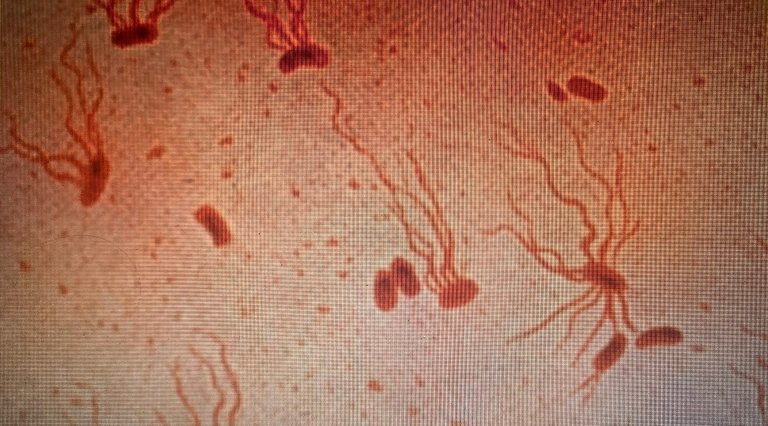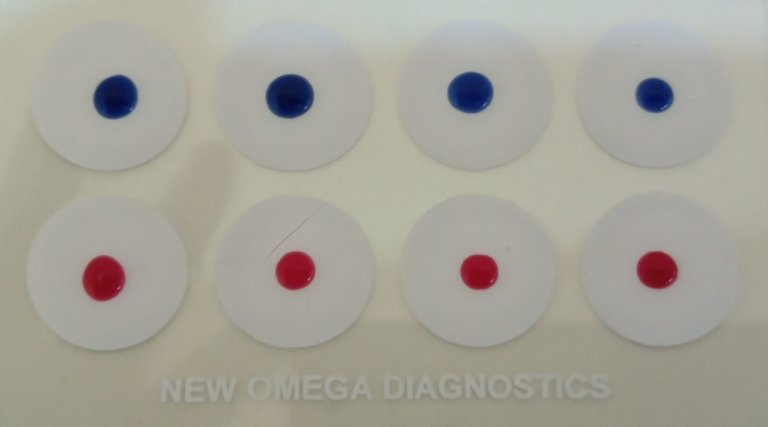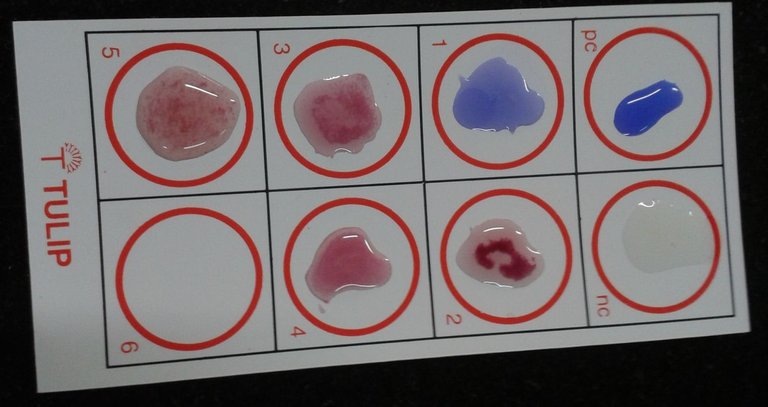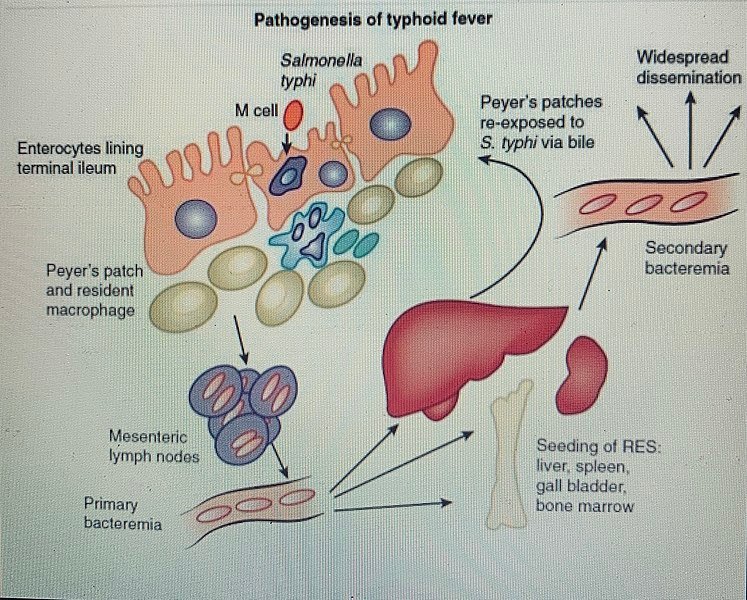Medical laboratory workshop Episode 9: The clinical significance of WIDAL testing for enteric Salmonella spp
In todays episode of our workshop, we will basically be describing the diagnostic procedures for testing and detecting one of the most common infection in the tropics - Salmonella typhi and paratyphi infection. I will take time to explain the nitty-gritty about the diagnostic procedure and how infection with the pathogens affects us as humans. We will make it short and detailed. Ride with me as we begin with a brief introduction.
Introduction
Salmonella species are made up of Salmonella typhi, Salmonella paratyphi, Salmonella typhimurium and Salmonella enteritidis. The Commonly diagnosed species are the typhi and paratyphi, and they more prevalent in developing countries.
The Widal test, developed in 1896 and named after its inventor, Georges-Fernand Widal, is an indirect agglutination test for enteric fever or undulant fever whereby bacteria causing typhoid fever is mixed with a serum containing specific antibodies obtained from an infected individual

Salmonella enterica serovar Typhi flagellar stain
Salmonella typhi is a gram negative enteric rod shaped bacteria. They live in the human stomach and intestines, hence the name enteric. They live and thrive mostly in the gastrointestinal tract. They are motile in nature and this motility is facilitated by their flagella.
People mostly get infected with this bacteria through food (agro products inclusive) and water consumption. After infection of the host, they penetrate the submucosa of the stomach and travel to the intestine where they dwell in one of the lymphoid tissue called the Peyer's patches. They are particular about the Peyer patches in the reticuloendothelial system because, it is from here that they are distributed through the body's lymphatic system into the blood.
The clinical symptoms people usually experience are caused by the replication of these bacteria in reticuloendothelial system (made up of the liver, spleen, and bone marrow). The symptoms experienced by those infected with this bacteria include pain in the abdomen (most common), nausea, vomiting, and diarrhea. Fever is also a common symptoms experienced by sufferers.
When it comes to the diagnosis of salmonella typhi bacteria, the antibodies that the body has produced against this bacteria is of utmost interest. Besides, doing a bone marrow biopsy can give a more definitive result since they tend to replicate in this part of the reticuloendothelial tissue. Rather than the invasive procedure which is more expensive, a WIDAL agglutination testing is often preferred for quick and cheap diagnosis.
Clinical significance of these testing
A WIDAL test is done to detect the presence of Salmonella antibody produced by the body against the pathogen Salmonella typhi - the causative agent of the well-known typhoid disease (fever). The presence of the typhoid antibody in large amounts gives you an idea of the severity of the patient's problem. Most times if left untreated, the bacteria eats through the intestine and finds its way into the blood just as we earlier established.
The antigen of these bacteria are mostly detected in the body as foreign thus, the body in response, mounts an immune response through the production of antibodies that are specific to the bacteria antigen. These antibodies are produced to fight off the invading salmonella bacteria. They continue to circulate in the body looking for more bacteria to destroy.
In patients with salmonella infection, the antibodies of interest are the typhi and paratyphi antibodies. Salmonella species have two major antigens - lipopolysaccharide (O) and flagellar (H) antigens. These antigens are the corresponding antigens to the antibodies produced by the body against the bacteria. So in clinical testing, a simple principle of antigen-antibody reaction is employed.
Commonly, WIDAL is intended for the detection of Typhoid antibodies that are usually found after two weeks of Salmonella infection. Over time, the level of these antibodies rise progressively in the body of the patient to a maximum by 3-4 weeks so far the patient does not take antibiotics against the infection.
To easily know if it is actually a salmonella infection, you would observe a progressive rise in the antibodies titre level during the period of the infection. The Persistent and progressive rise in the antibody titre is a true indication that the patient is infected with salmonella bacteria.
Measurement of antibody titer is by standard done using the tube dilution method to quantitate the concentration of the antibody in the patient. These can be time consuming and laborious, hence the tile method is preferred in case where the amount of the salmonella antibodies are not of interest.
Over here, we use the qualitative method for detecting and grading the antibody titer because it is less expensive (the patients may not afford the more expensive techniques), less time consuming and relatively less demanding, this method though is not as reliable as the tube method which gives you the quantitative measure of the actual amount of the salmonella antibody titer in the patient.
Principle behind WIDAL antibody testing
The test is pretty simple and similar to the blood group testing which I explained in detail in one of my previous articles. But s better and detailed understanding, let's modify the explanation.
WIDAL testing is based on the agglutination reaction between the specific species of killed salmonella core O antigens, flagellar H antigen, paratyphi AO and paratyphi AH, paratyphi BO and paratyphi BH antigens, paratyphi CO and CH antigens against the antibodies found in the serum of the patient.

It is done by simply mixing and reacting the commercially prepared salmonella antigens with the patient's serum (best) or plasma (in cases where serum is not readily available).
The serum (fluid portion of the blood that is seen when the blood is allowed to retract in a plain tube) is preferred because it contains more concentration of the antibody we want to react with the antigen than you would find in the plasma (fluid portion of the blood gotten when anticoagulant is added to the blood).
If the salmonella antibody is present in the patient, it will react with the commercial antigen to form a visible agglutination and if the antibody is absent in the patient, no agglutination is formed after 5 minutes of rocking the glass slide. The level of the agglutination (In cases of positive results) will give you an idea of the concentration of this antibody and invariably, the level of infection.

Remember we earlier explained that antibodies are produced against the salmonella antigens. When the antigens and antibodies are reacted, a visible reaction seen as an agglutination, is an indication of a positive test results i.e the salmonella bacteria is present in the patient. Thus, the results is reported as being a positive test.
However, the degree of the agglutination reaction also plays a vital role. A minor agglutination reaction cannot be regarded as a significant titre. A significant titre must be greater than or equal to 1/80. Titre values gotten beyond or equal to 80 are regarded as being significant.

A Widal Test slide showing agglutinations in reactions of corresponding O and H antigens
There are some technicalities in running a WIDAL testing of which some do not really understand. A true positive test results will be seen as a agglutination or a reactive titre in either the O or H typhi. When also observed correspondingly in any of the paratyphi, then it is also regarded a true positive test for either paratyphi A, B or C respectively.
But in a situation where there is a reactive response only in the flagellar antigen AH, BH or CH and there is no reactive response in the core O and flagellar H antigens, then it simply means that the reaction is non specific, meaning, it is caused by any of the salmonella specie. These non specific reaction means that, the reagent could be reacting to something else that is not salmonella antibodies.
The above point is very crucial in interpreting medical laboratory results. A lot of health professionals make this mistake. Hopefully, this will serve as guide to anyone conducting these test.
Above all, as a rule in running laboratory investigations, controls are very important. They raise the confidence in clinical laboratory results. It is very important you run a control test before you begin the test. Running a control not only ensures confidence in the results, but also validates the testing kits. When controls fail, it is a clear indication that the kits could either be bad or expired.
Treatment available
Vaccination with the typhoid vaccine is one of best way to prevent this bacteria infection. Adequate uee of clean and safe water goes a great length in prevention. Children are easily predisposed to infection with salmonella bacteria, and as such, they need to to be well monitor with regards to food they consume and the water they drink.
People who are actively ill with typhoid fever and people who are carriers of the bacteria that cause typhoid fever can both spread the bacteria to other people. When someone eats or drinks contaminated food or drink, the bacteria can multiply and spread into the bloodstream, causing typhoid fever.
Once you notice a persistent rise in the body temperature, demonstrated as fever, please visit the nearest hospital for adequate treatment. Antibiotics are very effective in the treatment of salmonella bacteria. Remember, wrong use of these drugs can confer resistance in the bacteria and this can complicate effective treatment. Never use drugs without prescription.
In conclusion, typhoid fever caused by the infection with the bacteria salmonella can be life threatening if not treated early enough. The prognosis in most cases depends on the time of medical intervention. The earlier the better. Ensure that the water you use of cooking are safe and well covered. Avoid eating raw meat and egg, as these are easy means through which one can get infected besides consuming unhealthy food.
References
•A review of Salmonella enterica with particular focus on the pathogenicity and virulence factors, host specificity and antimicrobial resistance including multidrug resistance
•Widal Test- Introduction, Principle, Procedure, Interpretation and Limitation
•Interpretation of the Widal test in the diagnosis of typhoid fever in Bangladeshi children
•Salmonella Typhi
•Enteric Fever:- Part 2 – Typhoid Fever Diagnosis, Widal test, Its Procedure and Interpretations

https://twitter.com/gentleshaid/status/1560952378798620676
The rewards earned on this comment will go directly to the people( @gentleshaid ) sharing the post on Twitter as long as they are registered with @poshtoken. Sign up at https://hiveposh.com.
Thanks alot for the very educative content. There is alot to learn from here.
Then my question is, the widal agglutination test result is usually reported as +, ++, +++. So is there an objective way of determining which is +, ++ or +++ in the reaction. Or is the interpretation dependent on the knowledge and experience of the Lab scientist to decide which should be interpreted as +, ++, or +++.
In the actual standard way, WIDAL results are reported in ratio of titres e.g 1/40, 1/80, 1/320 etc.
You are correct with the statement in the last paragraph. Interpretation and grading of reactive titre is done based on experience in most cases.
Thanks for the intelligent and thoughtful question💞
That's great. Thank you so much for your response and clarification Sir. I am so very grateful
Thanks for your contribution to the STEMsocial community. Feel free to join us on discord to get to know the rest of us!
Please consider delegating to the @stemsocial account (85% of the curation rewards are returned).
Thanks for including @stemsocial as a beneficiary, which gives you stronger support.
💞
Thank you for this content.
Most people just get a feeling and conclude it has to be both malaria and typhoid. This has really caused abuse of antibiotics.
That's the common thing people believe. Malaria abd typhoid is the common phrase, meanwhile these two are quite different entities caused by different pathogens.
Thanks for the read dear 💞
Congratulations!
✅ Good job. Your post has been appreciated and has received support from CHESS BROTHERS ♔ 💪
♟ We invite you to use our hashtag #chessbrothers and learn more about us.
♟♟ You can also reach us on our Discord server and promote your posts there.
♟♟♟ Consider joining our curation trail so we work as a team and you get rewards automatically.
♞♟ Check out our @chessbrotherspro account to learn about the curation process carried out daily by our team.
Kindly
The CHESS BROTHERS team
💞